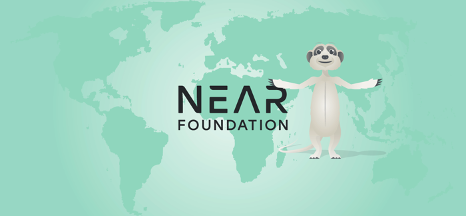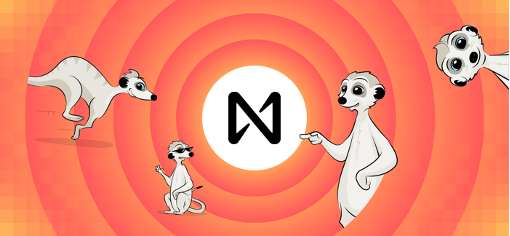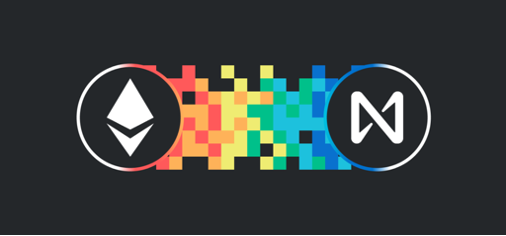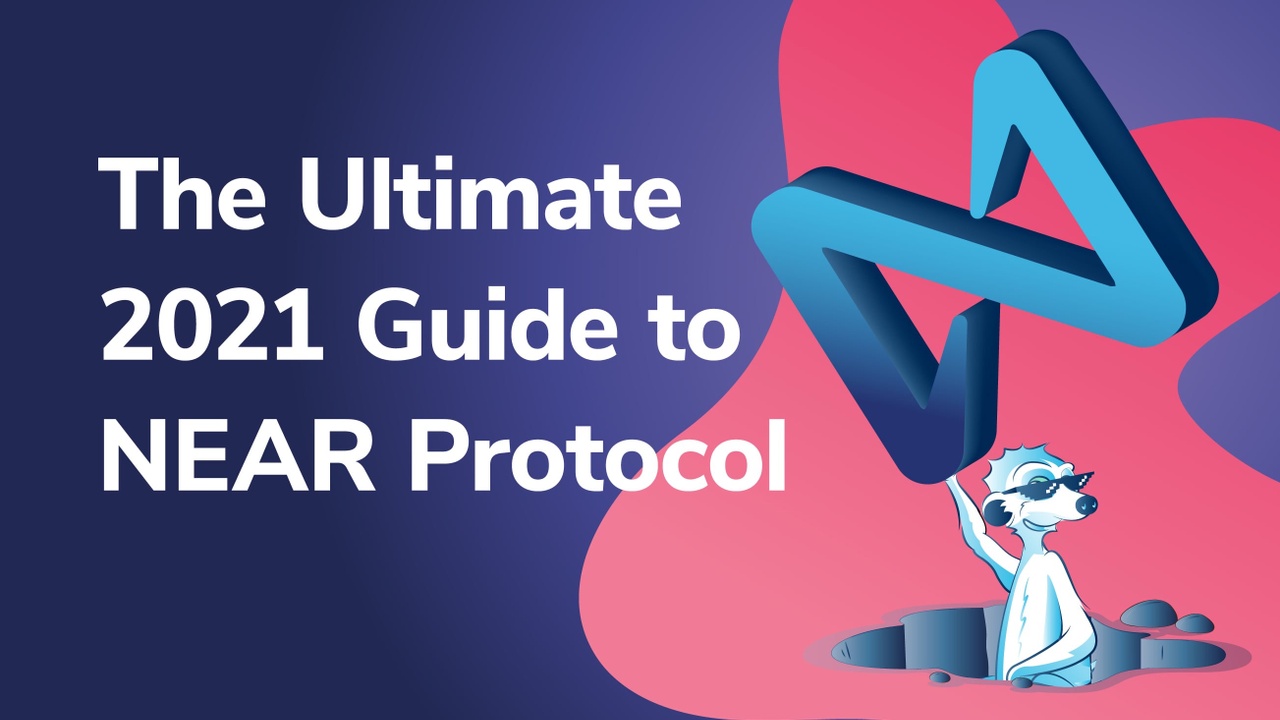
NEAR Protocol is a next-level blockchain protocol designed for developers to swiftly deploy decentralized applications (dApps) with minimal effort required. Created with novel consensus algorithms and sharding protocols, NEAR Protocol has developed a smart contract-enabled blockchain that facilitates the creation of community-based dApps. Furthermore, the NEAR blockchain achieves this with substantially lower costs than that of the Ethereum network and faster transaction finality. Moreover, the NEAR Protocol Wallet gives NEAR token holders the opportunity to earn staking rewards. By locking up NEAR tokens, users can contribute to the security of the network by becoming a delegator or validator node.
In this article, we’re going to explore the NEAR blockchain and the platform it provides for developers to quickly get their decentralized applications (dApps) to market. Also, we’ll explore the NEAR ecosystem and the apps that utilize the native NEAR token, including the NEAR Protocol Wallet.
To understand how blockchain works on a technical level, be sure to see our Blockchain & Bitcoin 101 course! Ivan on Tech Academy provides all the tools necessary when entering the crypto space for the first time! Also, to learn how to safely set up an exchange account and trade, see our Crypto Basics course! Or, to get set up with the Web3 Wallet, MetaMask, and familiarise yourself with popular decentralized finance protocols, see the DeFi 101 course at Ivan on Tech Academy!
What is NEAR Protocol?
NEAR Protocol is aiming to build the “fastest path to market” for blockchain developers. With NEAR, users can easily create their own scalable, sustainable blockchain-based applications in just a few minutes. The NEAR blockchain is an open-source platform that helps to expedite the creation of decentralized applications (dApps). Furthermore, this is achieved with minimal costs.

NEAR is providing developers with tools to create enterprise-ready blockchain solutions that could help shape the future of finance. Also, NEAR Protocol is combining elements of the legacy financial system with blockchain protocols to create some of the most diverse and versatile financial instruments that leverage the internet of value, taking the world of finance into unchartered territory.
Moreover, NEAR provides developers with the tools to create frictionless, cross-chain, interoperable decentralized applications (dApps) and smart contract-based services. Below we discuss some of the primary features of NEAR Protocol in further detail.
NEAR Collective and NEAR Foundation
Developed by a team of over 50 expert blockchain developers globally, the NEAR blockchain mainnet launched in October 2020. During this launch, holders of the NEAR token were given partial ownership of the NEAR blockchain. This is to become further decentralized as the adoption of the platform continues to increase.

Furthermore, the development and governance of NEAR Protocol are overlooked by NEAR Foundation. NEAR Foundation is a non-profit, community-driven entity focused on maintaining the sustainable growth and development of the NEAR blockchain. Based in Switzerland, NEAR Foundation assists with funding, maintaining protocols, and organizing key elements of the governance model.
However, in the future, NEAR Foundation aims to move toward a fully decentralized blockchain, owned by NEAR token holders. In turn, this would allow NEAR to become a decentralized autonomous organization (DAO).
NEAR Token
The native multi-utility NEAR token facilitates the token economy of the NEAR blockchain ecosystem. Also, NEAR tokens can be used as currency payments, for network fees, governance rights, and staking rewards. This is because the NEAR token is used across all NEAR services and decentralized applications (dApps). Moreover, NEAR utilizes a “block-rewards-with-burn” token model which reduces the token supply as the platform sees higher usage.

There are two main use cases for the NEAR token. Firstly, NEAR app users require NEAR for transaction fees when interacting with decentralized applications (dApps) created on the NEAR blockchain. This is achieved using the NEAR Protocol Wallet.
Secondly, the nodes that secure the NEAR blockchain receive inflationary NEAR token rewards that come from transaction fees. Regardless of the number of tokens held, anyone can contribute to the security of NEAR Protocol. This significantly reduces the barrier to entry when compared to many Proof-of-Stake (PoS) mechanisms. Moreover, this makes it easier to secure the network.
How Does NEAR Protocol Work?
NEAR Protocol consists of various innovative elements that combine to create the fastest possible route to market for blockchain developers. Below are some of the key components of the NEAR Protocol.
Nightshade
Nightshade is a sharding model that tackles the complexities associated with the “fork choice” rule that is executed in each chain of common sharding models independently. This means that both shard chains and beacon chains must be created and tested individually.

The model adopted by Nightshade is a system that contains every transaction from all shards and alters the state of each shard. However, this does not require participants to physically download the full state or logical block. Rather, network participants are only required to maintain states that correspond to the specific shards they are tasked with validating transactions for.
Doomslug
Doomslug is a novel block generation mechanism proposed in 2019. This new and improved way of producing blocks allows practical finality, or ‘Doomslug’ finality, after just one round of communication between nodes in the network. This is achieved as each “block produced by Doomslug is irreversible unless at least one participant is slashed”.
Doomslug incorporates a finality protocol to achieve BFT (Byzantine Fault-Tolerant) consensus across the network during the second round of communication.
Similar to most BFT consensus algorithms, Doomslug nodes can continue operating even if there is a bad actor in the network. However, unlike BFT algorithms which require two-thirds of the network to be honest and online, just over half the network is required to be compliant to keep producing blocks with the Doomslug algorithm.
ETH to NEAR Rainbow Bridge
Currently in Beta, the NEAR Protocol Rainbow Bridge is a key feature that makes the project interoperable with Ethereum. With a similar user design to popular decentralized exchange (DEX) Uniswap, users can seamlessly transfer Ethereum-based assets across to the NEAR blockchain. Also, the Rainbow Bridge makes it easy to transfer digital assets stored in Web3 wallets like MetaMask using NEAR Protocol Wallets (mentioned later).

If you’d like to create an application on the Ethereum blockchain but have no programming experience, Ivan on Tech Academy can equip you with all the knowledge and tools necessary! Start with our Javascript Programming for Blockchain Developers course to learn the basics of programming. Then, you’ll be able to move on to our Ethereum Smart Contract Programming 101 course, to discover the Ethereum programming language, Solidity. After this, you can learn how to create and deploy a decentralized exchange (DEX) through our Ethereum Smart Programming 201 course. Or, you can create and sell non-fungible tokens (NFTs) through a decentralized marketplace with our Ethereum Game Programming course!
NEAR Protocol Wallet
Setting up a NEAR Protocol Wallet is simple and easy. After the first few initial steps creating an account and confirming personal details, the NEAR Protocol Wallet will need to be funded with a minimum of three NEAR tokens. This covers the cost of the creation of the wallet and the new Account ID. Each wallet account name will end with “.near”.

The NEAR Protocol Wallet has been designed with such a simplistic interface, users require no blockchain experience to use it. The home page shows a breakdown of the account details including the Account ID, and minimum, total, and available account balances. The right-hand side displays a user’s chosen recovery method and two-factor authentication methods (chosen during initial set-up stages). The tabs at the top will take users to either send, receive, or stake their NEAR tokens.
NEAR Protocol Staking
To be able to stake NEAR tokens, users must first have a NEAR Protocol Wallet account. There is technically no minimum amount required to stake on the network (excluding the three NEAR tokens needed to create the account). There are two primary ways to stake, with different reward rates depending upon the role and responsibility assumed within the network. This structure offers staking incentives suiting a wide range of risk appetites.
Validator Staking: This Proof-of-Stake algorithm requires validators to stake a minimum amount of NEAR tokens. However, this amount is dynamic and fluctuates with the amount of tokens staked by other validators on the network. These tokens are used as collateral to prevent any malicious behavior on the network. Any bad actors on the network will have their collateral stake slashed. Validators are responsible for validating blocks in the network, receiving transaction fees and network rewards every epoch (approximately every 12 hours). Validators can also choose to unstake their collateral at any time. However, the funds will remain locked for a further three epochs prior to being released.
Delegator Staking: For users who want to earn staking rewards without the responsibility of running a validator node, they can delegate their stake to an individual validator node or validator pool to earn a percentage of earned fees. Also, delegators are not penalized by NEAR Protocol. This means if a delegator’s chosen validator turned out to be a bad actor, delegators will only lose the rewards from the said validator. This removes the fear of a delegator’s stake being slashed.
NEAR Explorer
NEAR Protocol also offers on-chain insights using the NEAR Explorer block explorer. Similar to Ethereum’s Etherscan, users can use NEAR Explorer to check up on transactions and network activity. This can be by searching through Account ID, transaction hash, block height, and block hash. Furthermore, users are able to view various NEAR blockchain network activities. For example, the landing page shows the number of nodes in the network, including the number of validators. Also, users gain real-time updates of block height, average transaction times, and transaction fees displayed on the homepage.
NEAR for Developers
NEAR Protocol makes it easy for developers to get products to market quickly and safely. As a highly scalable smart contract-enabled blockchain, NEAR allows developers to build a wide range of decentralized applications (dApps). Furthermore, this is streamlined further by utilizing common programming languages. These include TypeScript, a “typed superset of JavaScript”, Rust, AssemblyScript, and any other Web Assembly (Wasm) compliant language.

This is made possible thanks to the “Nightshade” Byzantine Fault Tolerant (BFT) consensus mechanism and sharding solution and the “Doomslug” block generation mechanism. These novel mechanisms are at the heart of some of the largest enterprises embracing blockchain technology, allowing the NEAR blockchain to scale horizontally and seamlessly bridge between blockchain platforms and financial applications.
How to Get Involved
As the NEAR blockchain continues its rise to prominence, there are many ways that people can get involved to help the network expand. Furthermore, anyone with the correct skillset can contribute to the content and technical efforts of the NEAR community. Also, participants can earn rewards based on engagement and participation in NEAR events and incentives!
NEAR Protocol & NEAR Token Summary
With up to 10,000 times lower transaction fees than Ethereum, it’s no surprise that so many people are opting to build on the NEAR blockchain. There are currently more than 150 founders in the NEAR collective, and more than 60 partners worldwide. Moreover, NEAR Protocol Wallet makes it easy for users with a non-technical background to get on board.
Also, several blockchain developers are using the NEAR Protocol to create a diverse range of blockchain protocol products. These include platforms for building open market protocols, smart contract-enabled blockchains, NFT marketplaces, and much more!
Blockchain technology is the number one in-demand skill according to LinkedIn. Furthermore, Ivan on Tech Academy is the largest online blockchain education suite with over 30,000 students! Join today to get access to a wide range of courses to get your career in crypto started today!
See our Blockchain Business Masterclass course to gain an understanding of how blockchain can improve current centralized IT systems, plus project management and development techniques! Also, our OriginTrail 101 course is perfect for understanding how blockchain is changing the supply chain management industry. Join Ivan on Tech Academy to discover how to get your dream job in blockchain! Also, don’t forget to give us a follow on Twitter @Academy_IOT to let us know your thoughts about NEAR Protocol!





